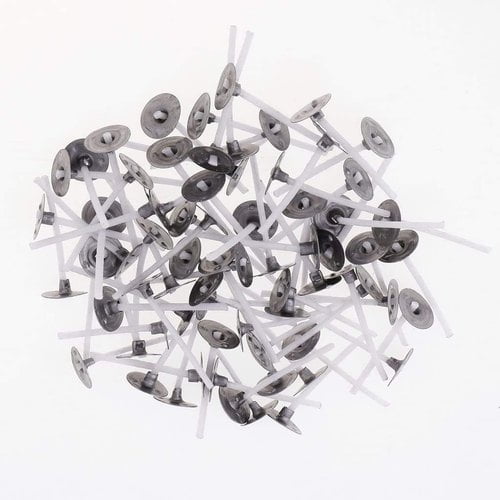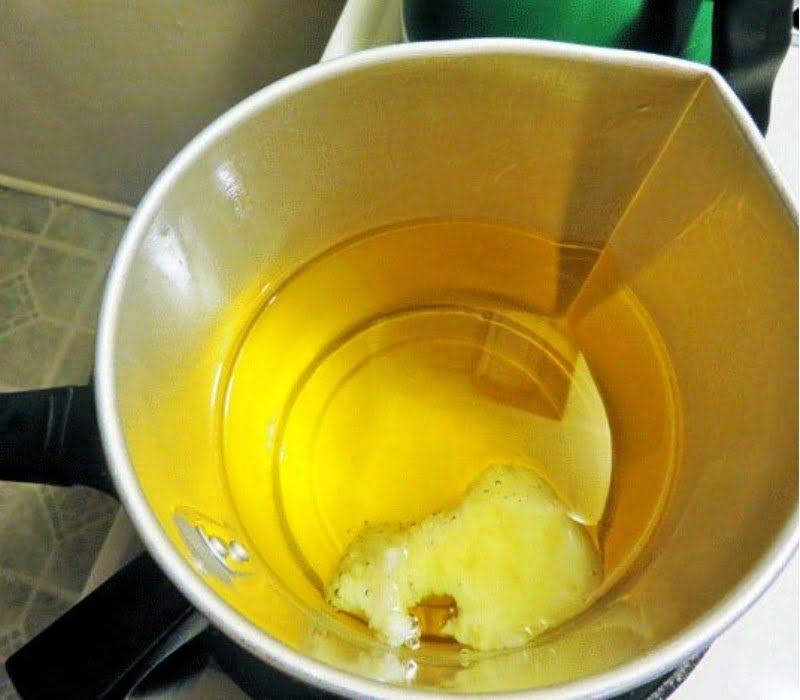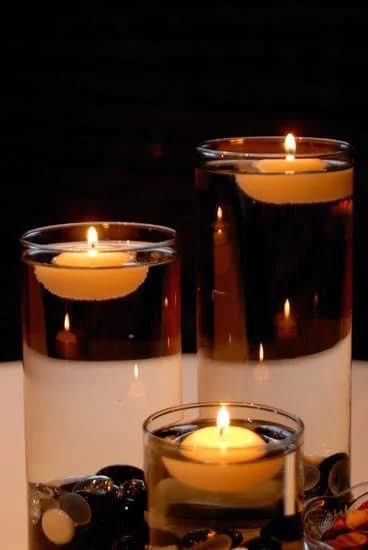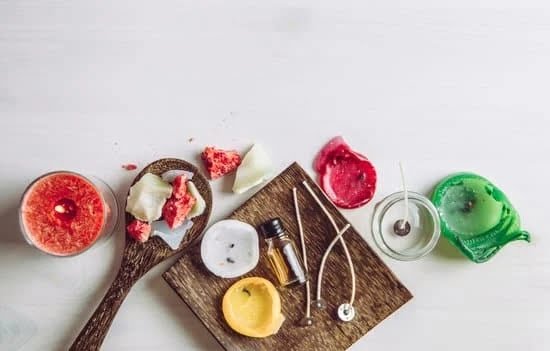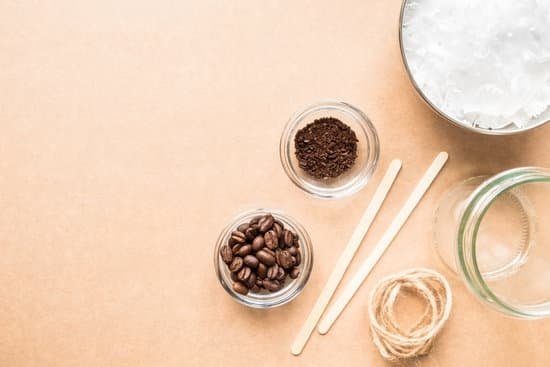Welcome to the captivating world where the art of candle making and the aromatic power of essential oils intersect. In this article, we will delve into the exciting realm of combining these two magnificent components and discover how they can elevate your candle-making experience. Explore the myriad possibilities as we unlock the secrets behind creating enchanting scents and soothing atmospheres using essential oils in candle making.
Essential oils have long been celebrated for their therapeutic properties and delightful fragrances. They possess a natural ability to not only stimulate our olfactory senses but also impact our overall well-being through aromatherapy. By harnessing the essence of botanicals and extracting their concentrated aromatic compounds, we can enhance the sensory experience of candlelight while enjoying the benefits of essential oils.
The perfect harmony between essential oils and candle making lies in their shared goal: to create a harmonious environment that envelops us with its alluring fragrance. Just as candles have served as beacons of light, warmth, and ambiance throughout history, essential oils have added an extra layer of delight with their captivating scents.
Join us on this aromatic journey as we discover how these two realms merge seamlessly to transform any space into a haven of tranquility, serenity, or invigorating energy.
Now that you’ve caught a whiff of what’s to come, let’s embark on this fragrant adventure as we uncover the dynamic duo of candle making and essential oils.
Begin by understanding how essential oils work their magic, discover the countless benefits they bring to your candles, learn how to choose the right aromas for your creations, master effective blending techniques, ensure safety precautions are taken during your crafting process, and get inspired by creative ideas for unique candle fragrances.
Stay tuned for insightful step-by-step guides, frequently asked questions about using essential oils in candle making, tips on enhancing your experience with these magical scents, and so much more. Get ready to unleash your creativity, elevate your senses, and immerse yourself in the aromatic art of combining essential oils with candle making. Let’s ignite the fragrant journey together.
Understanding the Power of Essential Oils
Essential oils have long been revered for their aromatic and therapeutic properties. Extracted from various parts of plants such as flowers, leaves, and roots through processes like distillation or cold pressing, these highly concentrated oils possess a powerful essence that can uplift the senses and promote wellness.
Aromatherapy, the practice of using essential oils to enhance physical and emotional well-being, has gained popularity in recent years. In this section, we will delve into the power of essential oils and explore how they can unleash the magic of aromatherapy when combined with candle making.
One of the key benefits of essential oils is their ability to evoke specific moods or emotions through scent. Certain aromas can relax the mind, relieve stress, improve focus, or uplift the spirits. For example, lavender essential oil is known for its calming properties and is often used to create a tranquil ambiance.
On the other hand, citrus scents like lemon or orange can energize and invigorate. By infusing candles with essential oils, you can transform them into powerful tools for creating desired atmospheres in your home or workspace.
In addition to their scent-sational qualities, essential oils also offer a range of potential health benefits. Some oils are believed to possess antibacterial or antiviral properties that can purify the air when diffused or burned in candles. Eucalyptus oil, for instance, is commonly used during colds or respiratory infections due to its decongestant effects.
Peppermint oil may help soothe headaches when diffused in combination with other relaxing scents like lavender. It’s important to note that while there are many claims about the therapeutic benefits of essential oils, further research is needed to fully understand their effects on different individuals and conditions.
Essential Oils and Candle Making
When it comes to creating candles, the use of essential oils can take your creations to a whole new level. Essential oils not only add delightful scents to your candles, but they also bring therapeutic benefits through aromatherapy. This section will explore the perfect match between essential oils and candle making, highlighting the unique qualities they bring when combined.
One of the key reasons why essential oils and candle making go hand in hand is the power of aromatherapy. Aromatherapy is the practice of using natural plant extracts to promote health and well-being. Essential oils are concentrated essences derived from plants that contain various therapeutic properties.
When these oils are diffused into the air, they can have a profound effect on our mental and emotional states. By infusing your candles with essential oils, you can create an atmosphere that promotes relaxation, uplifts mood, relieves stress, or even enhances focus and concentration.
Not only do essential oils add pleasing fragrances to your candles, but they also have potential benefits for physical health. For example, lavender essential oil is known for its calming properties and can help with better sleep quality. Eucalyptus essential oil has decongestant properties that can soothe respiratory issues. Peppermint essential oil can provide a refreshing and cooling sensation. The possibilities are endless when it comes to combining different essential oils in your candles to achieve desired effects.
| Benefits | Description |
|---|---|
| Enhanced mood | Using certain essential oils like lavender or citrus scents can improve mood by promoting relaxation or energizing. |
| Aromatherapy benefits | The combination of essential oils and candle making introduces aromatherapy benefits, such as stress relief, improved focus, or better sleep. |
| Increased creativity | The use of essential oils adds a new layer of creativity to candle making by allowing for unique and personalized fragrance combinations. |
The Benefits of Adding Essential Oils to Your Candles
Essential oils have long been used for their therapeutic properties, and when combined with candle making, they can create a truly immersive and aromatic experience. The benefits of adding essential oils to your candles are numerous, as they not only elevate the scent but also enhance the overall experience for both the mind and body.
Enhanced Aroma
One of the most noticeable benefits of incorporating essential oils into your candles is the enhanced aroma. Unlike synthetic fragrances, essential oils are derived from natural plant sources and possess distinct scents that can range from floral and citrusy to woody and earthy.
By choosing the right essential oil or blend of oils, you can create a custom fragrance that suits your personal preferences or special occasions. Whether you want a relaxing lavender scent for a calming atmosphere or a refreshing citrus aroma for an uplifting ambiance, essential oils can help you achieve the desired scent profile in your candles.
Aromatherapy Benefits
In addition to their pleasant aroma, essential oils also offer various aromatherapy benefits when used in candle making. Aromatherapy is the practice of using scents to promote physical and psychological well-being. Different essential oils have different therapeutic properties, such as lavender for relaxation, eucalyptus for clearing congestion, or peppermint for boosting energy.
By carefully selecting specific essential oils based on their known properties, you can infuse your candles with these beneficial qualities. Burning an aromatherapy candle infused with essential oils can help create an ambiance that supports relaxation, stress relief, focus, or even better sleep.
A Holistic Experience
By combining the beauty of candlelight with the power of aromatherapy, adding essential oils to your candles creates a holistic experience for all your senses. The flickering flame provides visual interest and warmth while the scent from the essential oils envelops you in its captivating aroma.
This multi-sensory experience can have a profound impact on your mood, mindset, and overall well-being. Whether you are looking to unwind after a long day, elevate the atmosphere during a special occasion, or create a sense of calm and balance in your living space, incorporating essential oils into your candles allows you to transform the act of lighting a candle into a deeply therapeutic and enjoyable experience.
Choosing the Right Essential Oils for Candle Making
When it comes to choosing the right essential oils for candle making, there are several factors to consider. Not all essential oils are created equal, and each one has its own unique aroma, properties, and compatibility with different wax types. By understanding these factors, you can create candles that not only smell amazing but also provide additional benefits such as relaxation or energy enhancement.
Aromas
One of the most important considerations when selecting essential oils for your candle making is the aroma. Essential oils come in a wide variety of scents ranging from floral and fruity to woody and earthy. Think about what kind of atmosphere or mood you want to create with your candles.
If you’re looking for a calming and relaxing scent, lavender or chamomile essential oil would be a good choice. On the other hand, if you want to create an energizing environment, citrus scents like lemon or orange would be more suitable.
Properties
Different essential oils have different properties that can provide various benefits when used in candles. For example, eucalyptus essential oil has antibacterial and antiviral properties that can help purify the air when burned. Peppermint essential oil has invigorating properties that can help improve focus and alleviate headaches. Consider the specific properties of different essential oils and choose ones that align with your desired outcome.
Compatibility
Another crucial aspect to keep in mind is the compatibility of essential oils with different types of wax. Some oils may perform better in certain waxes than others due to differences in their chemical composition. For example, soy wax tends to hold fragrances well, so it is compatible with a wide range of essential oils.
Beeswax has a natural honey-like scent that may interfere with some fragrance oils but works well with essential oils that complement its natural aroma. Experimentation is key to finding the right combination of essential oils and wax for your candles.
By carefully considering the aromas, properties, and compatibility of different essential oils, you can choose the perfect ones for your candle making projects. Remember to experiment and have fun with different scent combinations to create unique fragrances that will delight your senses.
Essential Oil Blending Tips for Candle Creation
Understanding Essential Oil Blending
Blending essential oils for candle making is an art form that allows you to create unique and captivating scents. Each essential oil has its own distinct aroma and properties, and when combined strategically, they can create a symphony of fragrance that enhances the overall experience of your candles. Understanding the basics of essential oil blending will help you craft the perfect scent for your candles.
When blending essential oils, it’s important to consider their individual aromas and how they complement or contrast each other. Some oils have similar scent profiles and can be blended together seamlessly, while others may clash and produce an unpleasant fragrance. Experimenting with different combinations is key to finding the right balance.
Playing with Notes: Top, Middle, and Base
In the world of perfumery and fragrance creation, scents are divided into three categories known as top notes, middle notes, and base notes. This concept can also be applied to candle making with essential oils.
Top notes are light, fresh, and volatile scents that are immediately noticeable when you first smell a candle. They provide the initial burst of fragrance but tend to evaporate quickly. Examples of top notes include citrus oils like lemon or bergamot.
Middle notes are the heart of the fragrance and give depth and body to the scent. They take longer to evaporate compared to top notes and often have floral or herbal characteristics. Oils like lavender or eucalyptus work well as middle notes in candle making.
Base notes are rich, deep scents that linger on even after the candle has finished burning. These oils have a slower evaporation rate and provide a solid foundation for the fragrance. Vanilla or patchouli are common examples of base note essential oils.
Creating Harmonious Blends
To create a harmonious blend of essential oils for your candles, start by selecting oils that fall into each category of notes. Begin with a base note oil as the foundation, add a middle note oil for depth, and finish with a top note for an enticing first impression. Experiment with different ratios until you find the perfect balance.
You can also create more complex blends by incorporating additional essential oils that share similar aromatic properties or complement each other. For example, you might combine citrus and floral oils to create a refreshing and uplifting blend, or mix woody and herbal oils for a soothing and grounding scent.
Remember to keep detailed notes of your blending experiments so that you can recreate successful combinations in the future. With time and practice, you’ll become more confident in your ability to craft the perfect scent symphony for your candles using essential oils.
Safety Precautions and Best Practices
When working with essential oils in candle making, it is important to prioritize safety and follow best practices to prevent any potential hazards. Here are some guidelines to ensure you can enjoy the benefits of essential oils while maintaining a safe and responsible candle making process:
- Use High-Quality Essential Oils: It is crucial to source high-quality, pure essential oils from reputable suppliers. Low-quality or synthetic oils may not only produce substandard scents but also pose health risks when heated. Look for oils that are specifically labeled as suitable for aromatherapy or candle making.
- Dilute Essential Oils Properly: Undiluted essential oils can be strong and overwhelming when used in candles. It is recommended to dilute them with a carrier oil or wax prior to adding them to your candle mixture. A general rule of thumb is using about 1 oz (30 ml) of carrier oil per 15-20 drops of essential oil.
- Consider Flash Points: Each essential oil has a different flash point, which is the temperature at which it can ignite if exposed to an open flame. Ensure that the flash point of the essential oil you are using is higher than the burning temperature of your candle’s wick. This information can usually be found on the oil’s label or obtained from your supplier.
- Start with Small Quantities: When experimenting with essential oils in candle making, start with small quantities until you are familiar with how they will interact with your chosen wax type and fragrance load. This allows you to adjust the scent intensity and avoid overpowering fragrances.
- Ventilate Your Workspace: Essential oils release aromatic compounds into the air, especially when heated during the candle-making process. Make sure you work in a well-ventilated area or use a fume hood to minimize inhalation exposure.
- Test for Allergies: Before using a new essential oil in your candles, perform a patch test to check for any allergic reactions. Apply a small amount of the diluted oil blend on your skin and monitor for any adverse effects. If any signs of irritation occur, avoid using that particular oil in your candles.
- Store Essential Oils Properly: Essential oils should be stored in dark, glass bottles with tight-fitting lids, away from direct sunlight and heat sources. This helps maintain their quality and potency over time.
By following these safety precautions and best practices when using essential oils in candle making, you can create beautiful, fragrant candles while ensuring the well-being of yourself and others. Remember to always prioritize safety and take necessary precautions throughout the candle-making process.
The Step-by-Step Guide
Incorporating essential oils into your candle making process is a wonderful way to add an aromatic and therapeutic element to your creations. By following a simple step-by-step guide, you can easily infuse your candles with the scents and benefits of essential oils.
- Choose Your Essential Oils: Start by selecting the essential oils that you want to use in your candles. Consider the scent profiles and properties of different oils to create the desired ambiance and benefits. It’s important to ensure that the essential oils you choose are safe for use in candles and compatible with the other materials you’ll be using.
- Determine the Amount of Essential Oil: The amount of essential oil you add will depend on several factors including the type and strength of fragrance you desire, the size of your candle, and the type of wax you’re using. A general guideline is to use about 1 ounce of essential oil per pound of wax for a strongly scented candle.
However, it’s always best to refer to specific recipes or guidelines provided by reputable sources. - Add Essential Oil During Candle Making Process: There are different methods for adding essential oils depending on the stage of candle making. You can add the essential oil directly into melted wax before pouring it into containers, or you can wait until the wax has cooled slightly and then add it in for a more subtle scent.
| Step | Description |
|---|---|
| Step 1 | Melt your wax according to manufacturer instructions. |
| Step 2 | If desired, add any additional fragrance additives (such as dye) at this stage. |
| Step 3 | Add the desired amount of essential oil, stirring gently to ensure even distribution. |
| Step 4 | Pour the scented wax into your chosen containers and allow it to cool and set. |
| Step 5 | Once completely cooled and solidified, trim the wick and enjoy your beautifully scented candle. |
Remember to follow any safety precautions when working with hot wax or essential oils. It’s also a good idea to experiment with different amounts and combinations of essential oils to find your preferred fragrance strength. With practice, you’ll be able to create candles that not only look beautiful but smell divine too.
Creative Ideas and Inspiring Recipes
In this section, we will explore various creative ideas and inspiring recipes for mixing essential oils to create unique candle fragrances. The combination of different essential oils can produce an array of captivating scents that will enhance the overall aromatic experience of your candles.
When it comes to mixing essential oils for candle making, the possibilities are endless. You can experiment with different combinations to create your signature scent or replicate popular fragrances. Here are a few creative ideas and recipes to get you started:
- Floral Delight: Blend lavender, jasmine, and ylang-ylang essential oils for a soothing and uplifting floral scent. This combination creates a peaceful ambiance and promotes relaxation.
- Citrus Burst: Combine grapefruit, lemon, and bergamot essential oils for a refreshing and energizing aroma. This citrus blend is perfect for brightening up any space and boosting your mood.
- Woodsy Escape: Mix cedarwood, sandalwood, and patchouli essential oils for a warm and earthy fragrance reminiscent of a walk through the forest. This blend adds depth and complexity to your candles.
- Sweet Serenity: Create a calming atmosphere with a blend of vanilla, chamomile, and sweet orange essential oils. This sweet and comforting combination is perfect for winding down after a long day.
Remember to use high-quality essential oils that are suitable for candle making. It’s also important to test the scent by making smaller batches before committing to larger quantities.
| Idea/Recipe | Essential Oils |
|---|---|
| Floral Delight | Lavender, Jasmine, Ylang-Ylang |
| Citrus Burst | Grapefruit, Lemon, Bergamot |
| Woodsy Escape | Cedarwood, Sandalwood, Patchouli |
| Sweet Serenity | Vanilla, Chamomile, Sweet Orange |
Enjoy the process of exploring different combinations and creating your own unique candle fragrances. Don’t be afraid to mix and match essential oils to create scents that truly resonate with you and your desired ambiance.
Frequently Asked Questions
As the popularity of using essential oils in candle making continues to rise, it’s natural for beginners and experienced crafters alike to have questions. In this section, we will address some of the most common queries about incorporating essential oils into your candle making process.
- Can I use any essential oil in my candles?
- How much essential oil should I add to my candles?
- Can I mix different essential oils together?
- How do I prevent my candles from losing their fragrance over time?
While most essential oils can be used in candle making, it’s important to consider their individual properties and compatibility with wax. Some essential oils may not perform well at high temperatures or may discolor the wax. Additionally, certain essential oils have a stronger scent throw than others, so it’s essential to experiment and find the right balance for your desired fragrance.
The amount of essential oil to add depends on various factors such as the type of wax used, personal preference for scent intensity, and the specific oil being used. A general guideline is to use about 1 ounce of fragrance per pound of wax, but it’s recommended to start with a smaller amount and adjust accordingly. Overusing essential oils can lead to overpowering scents or compromising the quality of your candles.
Absolutely. In fact, blending different essential oils is an excellent way to create unique and customized scents for your candles. By experimenting with various combinations, you can unleash your creativity and craft aromatic symphonies that resonate with your personal preferences or match specific themes or occasions.
To ensure that your candles maintain their fragrance over time, there are a few key practices you can follow:
- Use high-quality essential oils from reputable suppliers.
- Store finished candles in a cool, dry place away from direct sunlight or extreme temperatures.
- Keep the lid on when not in use to preserve the scent.
- Use proper candle storage containers that provide airtight seals.
By following these guidelines, you can maximize the longevity of your candles’ fragrance and continue to enjoy their aromatic magic for months to come.
As you continue on your journey of combining essential oils with candle making, it’s essential to keep learning, experimenting, and refining your craft. Don’t be afraid to try new scents, techniques, and recipes to create truly unique and memorable candles that bring joy and relaxation to yourself and others.
The Finishing Touch
Once you have successfully incorporated essential oils into your candle making process, you can take your experience to the next level by further enhancing the scent and ambiance of your candles with the power of essential oils. By strategically using essential oils, you can create a truly immersive and personalized sensory experience for yourself and others.
One way to enhance your candle experience is by creating a complementary environment through diffusing essential oils in the room where you plan to burn your candles. You can use an essential oil diffuser or simply add a few drops of your chosen essential oil to a bowl of hot water. As the fragrance from the diffuser or bowl fills the air, it will beautifully blend with the aroma coming from your candles, creating a harmonious and inviting atmosphere.
Another way to enhance your candle experience is by engaging in relaxation practices such as meditation or yoga while enjoying the soothing scent of your aromatic candles. The combination of calming scents and mindful practices can help create a calming and rejuvenating space for self-care.
Lastly, consider using essential oils during other activities that complement candle burning, such as taking a bath or practicing aromatherapy massage. By incorporating matching scents into these rituals, you can extend the enjoyment of essential oils beyond simply burning candles.
Conclusion
In conclusion, the combination of essential oils and candle making is truly a match made in fragrant heaven. By incorporating essential oils into your candle creations, you can elevate the scent and experience to new heights. Not only do essential oils add beautiful aromas to your candles, but they also unleash the power of aromatherapy, providing numerous benefits for your well-being.
Choosing the right essential oils for candle making is crucial in achieving the desired scent and creating a harmonious blend. Consider the aromas, properties, and compatibility of different essential oils to create unique fragrances that suit your preferences. Experimenting with different combinations and blending techniques will allow you to craft the perfect scent symphony that resonates with your senses.
However, it is important to use essential oils in candle making responsibly. Always follow safety precautions and best practices to ensure a safe and enjoyable experience. Keep in mind that certain essential oils may have specific considerations or restrictions, so make sure to research and educate yourself on their proper usage.
By following a step-by-step guide like the one provided in this article, you can easily incorporate essential oils into your candle making process. From measuring the right amount of oil to ensuring proper mixing and cooling, each step contributes to creating a high-quality scented candle that showcases the aromatic art of combining essential oils with candle making.
Lastly, don’t be afraid to explore creative ideas and inspiring recipes when mixing essential oils for unique candle fragrances. The possibilities are endless, allowing you to create personalized scents that evoke various moods and atmospheres. Whether you’re looking for relaxation or energy boost, there’s an essential oil blend waiting for you to discover.

Welcome to my candle making blog! In this blog, I will be sharing my tips and tricks for making candles. I will also be sharing some of my favorite recipes.

